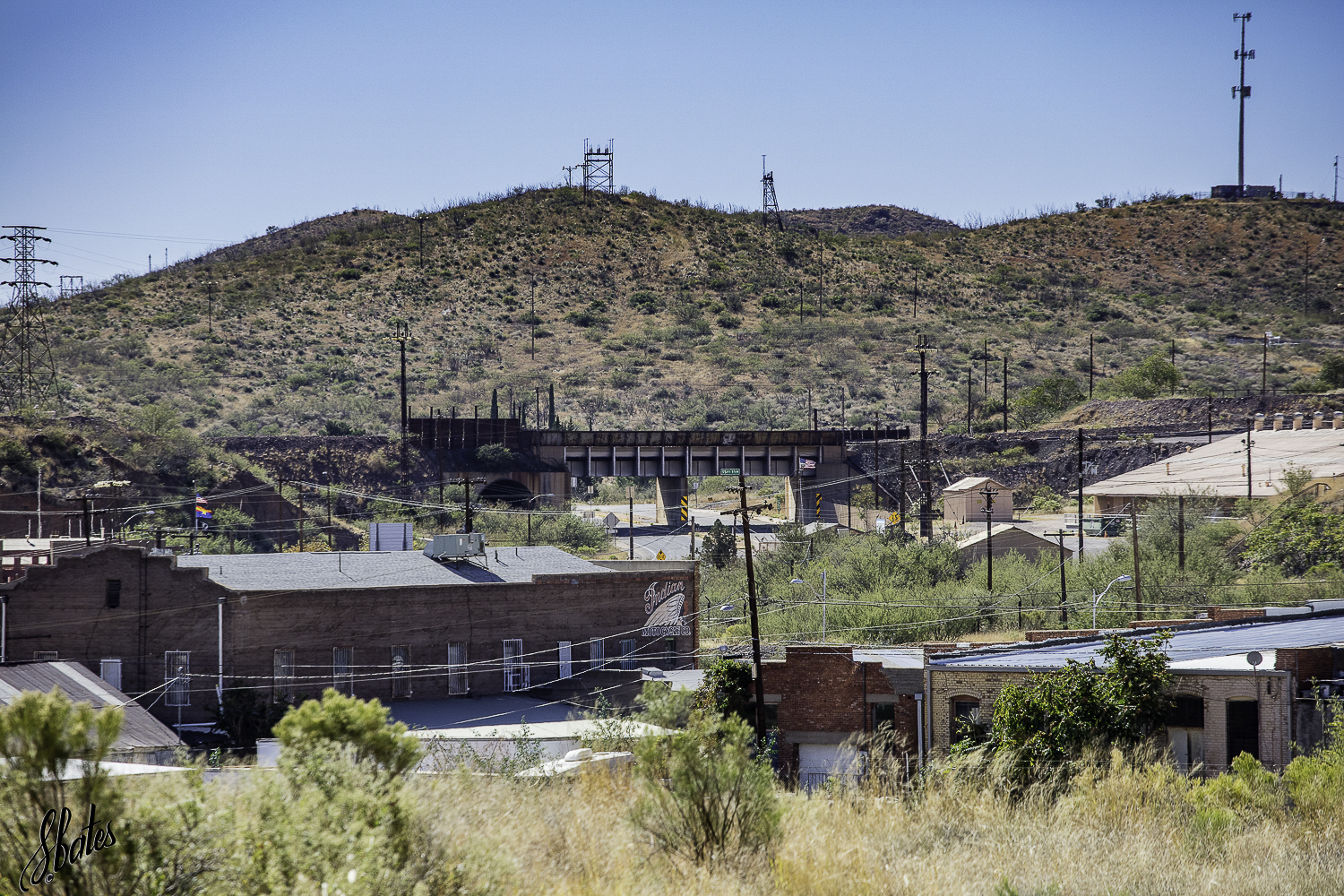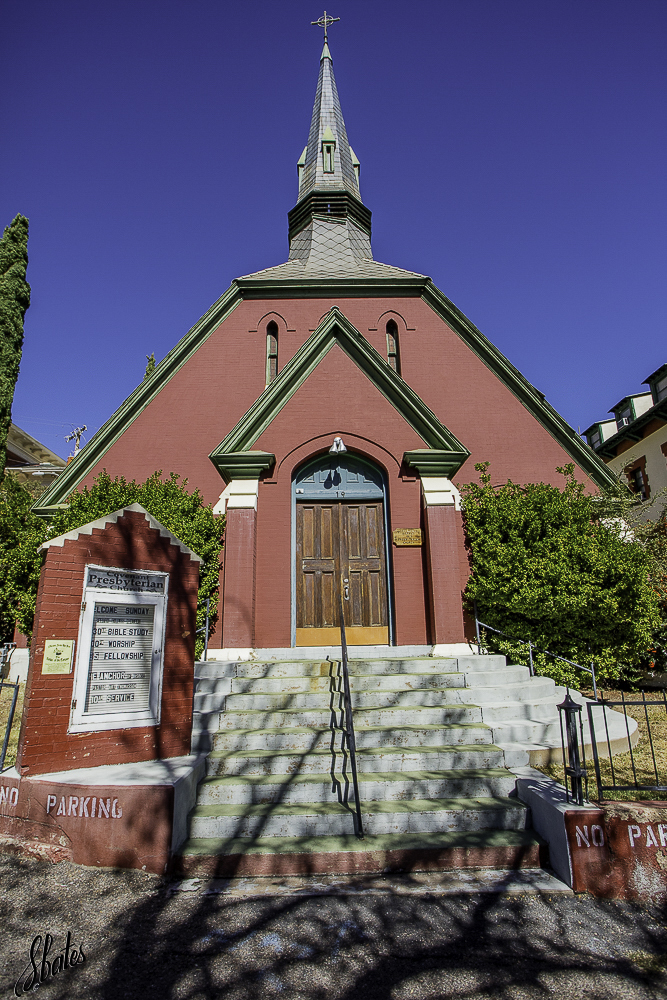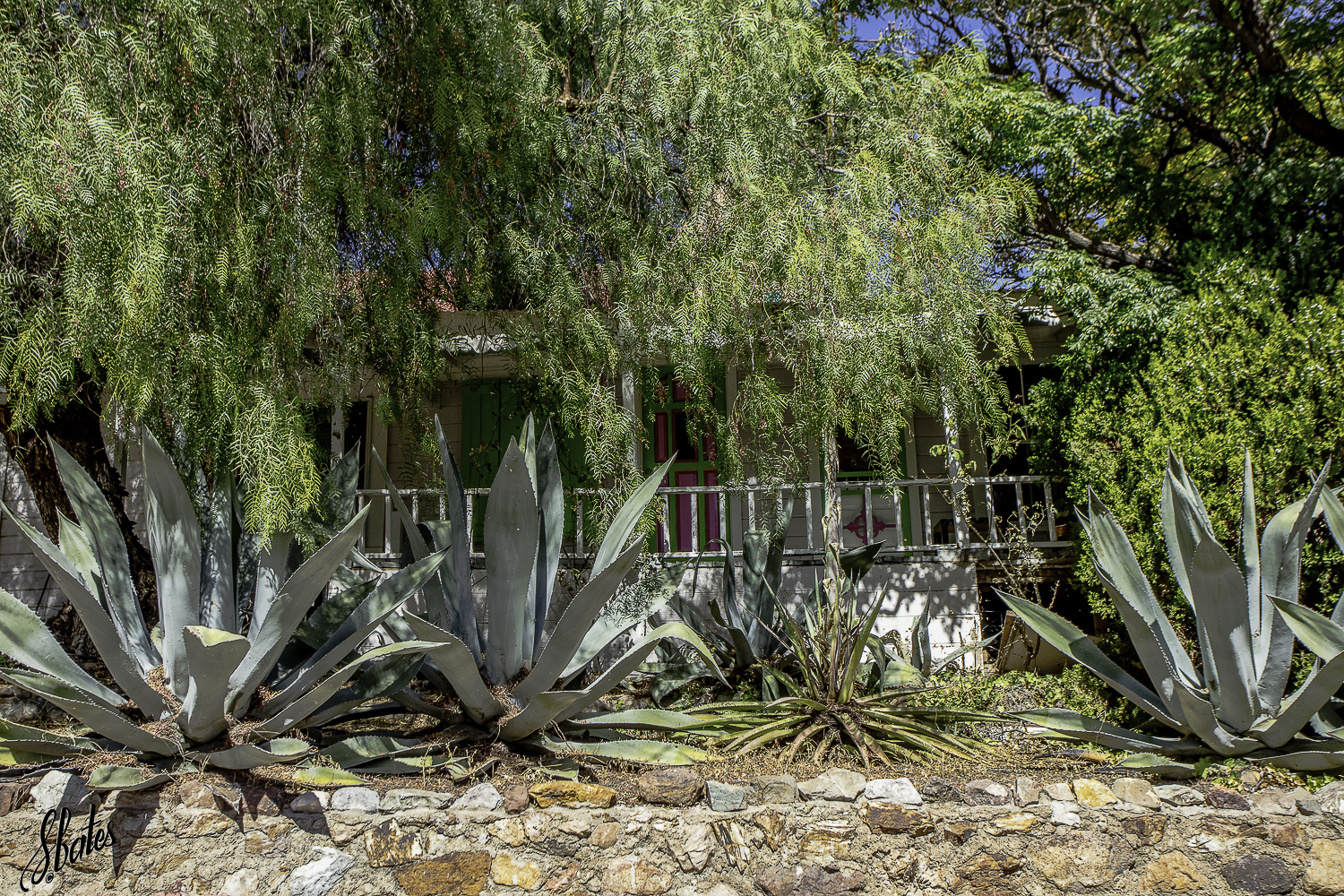Most Arizona based photographers have been to Bisbee at least once. Located 90 miles southeast of Tucson, it is relatively accessible and its historic buildings, mine and topography beckon photographic exploration. Once a booming mining town, it is now undergoing transformation to become a tourist destination. Most photographers go to capture the prettier side of Bisbee, such as the lobby of the Copper Queen Hotel. This post offers a different viewpoint, one that is photographed from the perspective of a journalistic street photographer. Steve is much more that than a photographer of pretty landscapes. I would not have looked for these scenes to photograph. I would not have even thought about looking for them! This is the other side of Bisbee and worth some exploration.
I suspect the fence in the background is to keep one from falling into the mine pit. But, the chain around the memorial and the fence caused me to pause . . .










































